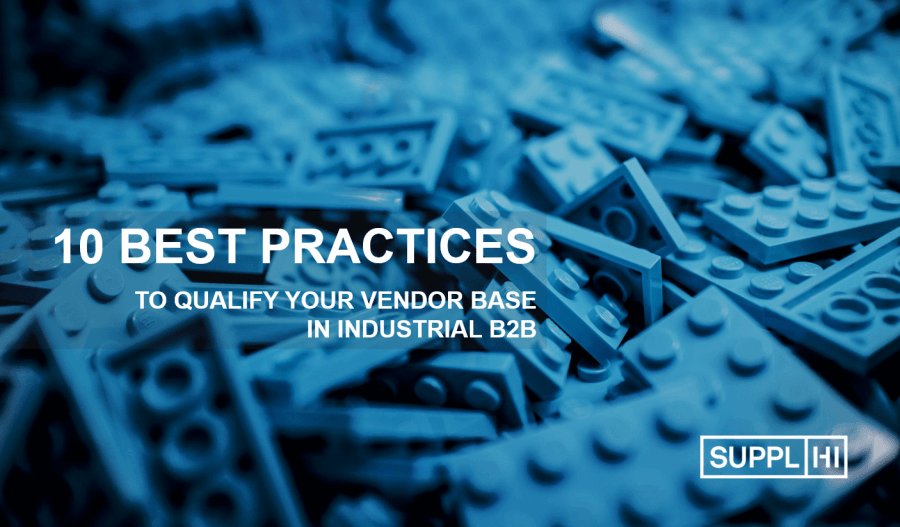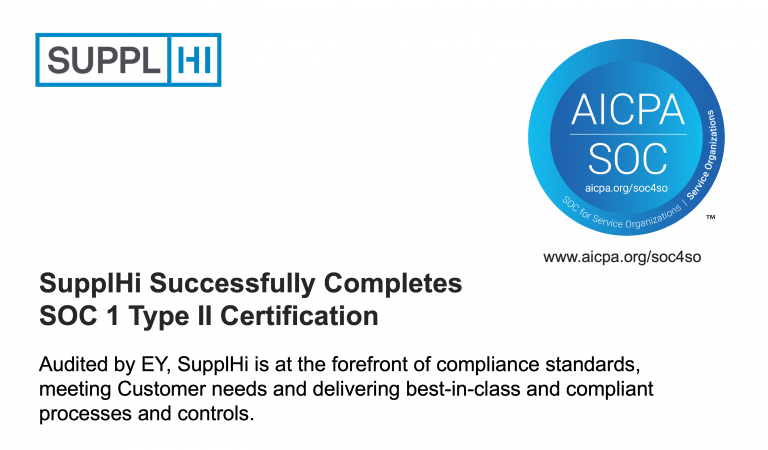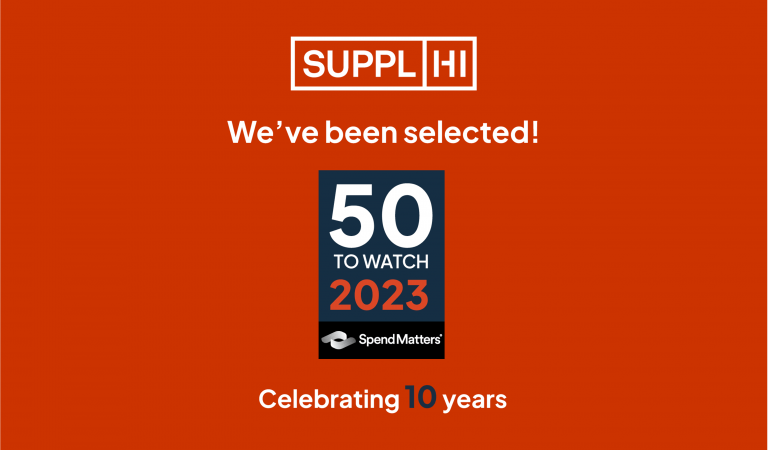Milan – April 21st, 2020
Creating and managing a reliable and constantly updated Master Vendor List is a task hard to accomplish while balancing process complexity, actors involved, costs, time, and risks. SupplHi has some tips on how to do it in the most efficient way.
Here is a synopsis of the full, free-of-charge PDF:
1. Build a formal Qualification process that involves Evaluators and Approvers
The Vendor Qualification is a company-wide effort. For an accurate decision, different capability areas of a Vendor (e.g. Organization, Quality System, Engineering, …) should be evaluated by different disciplines and functions (e.g. Technical, Quality, HSE, …) with expertise in each capability area.
2. Collect constantly updated information from your Vendors
A crucial step to assess Vendor’s ability to deliver is to collect structured information. The information requires to be kept updated through constant expedites to the Vendor as well as appropriate versioning to guarantee compliance and allow your organization to better analyze the evolution of the Vendor
3. Perform Quality Assurance of the information provided by Vendors
Quality assurance activities are required to make sure that the information provided by Vendors is consistent and up to date. Bear also in mind that duplicates and misleading information are not infrequent, while complex corporate structures require a focus.
4. Focus on assessing the Sustainability of your Vendor base
A Buyer organization’s whole Sustainability model relies on the sustainability across its Supply Chain – that can represent up to 80% of the Buyer’s revenues – focusing on Vendors as well as Sub-Vendors. Define an easy-to-use assessment methodology for your vendors’ ESG practices and monitor the Sustainability performances of your Vendors and Sub-Vendors.
5. Incorporate Compliance steps within the Qualification process
Presence in sanction lists, PEPs (Politically Exposed Persons) and adverse media are among the key elements required to assess the compliance risks of Vendors – a critical element of every supply chain, especially in industrial B2B. Monitor the compliance of your Vendors – also leveraging in an integrated way within your Vendor Management process on information delivered by leading global data providers.
6. Manage the Vendor Qualification process by Category of Supply
The more complex the equipment or the service you are qualifying, the more specific the information you need to collect and assess. Therefore, it is important to ask the right questions to Vendors according to the category of equipment or services they are providing to correctly assess their capability to deliver.
7. Manage Qualification of Vendors for each Production Location
Not every production location is made the same, hence the equipment or service offered. Adopt Qualifications at Production Location level to decide whether to qualify a specific location or a specific execution plan by the Vendor.
8. Perform Assessment Visits for Vendors of the most critical supplies
The most critical supplies require an Assessment Visit at Vendor’s premises. Not only to check accuracy of answers given but also to further assess the Vendor, its modus operandi and to make sure that it is capable to deliver the equipment or service as required.
9. Manage the process on a digital platform to reduce time of all colleagues
Managing your Vendor Management processes on an integrated digital platform -that in addition provides productivity tools such as Vendor Lists management tool reduces drastically time in collecting and managing information by Vendors and in performing evaluations.
10. Do not act alone, join a collaborative network to limit costs and act quickly
Creation and improvement of questionnaire, information Quality Assurance on data provided by Vendors and development of a digital infrastructure are costly processes both in terms of money and time. Avoid “re-inventing the wheel” and join a collaborative network that is based on the best practices of the most demanding stakeholders of the industry. Strongly reduce your costs, risks and time consumed for service of the platform, while increasing your information and transparency
Click on the link to download the 10 Best Practices for Qualifying your Vendor Base in Industrial B2B: Download



